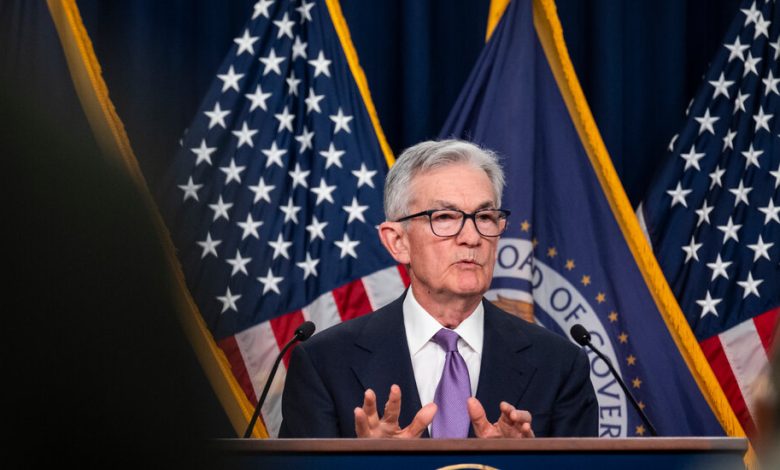What to Watch as the Fed Makes Its Interest Rate Decision

Federal Reserve officials will conclude their two-day policy meeting on Wednesday afternoon, and while central bankers are widely expected to leave interest rates unchanged, there is an unusual degree of uncertainty about what exactly they will signal about the future.
On the one hand, officials could stick with their recent script: Their next policy move is likely to be an interest rate reduction, but incoming inflation and growth data will determine how soon reductions can begin and how extensive they will be.
But some economists are wondering if the central bank could pivot away from that message, opening the door to the possibility that its next rate move will be an increase rather than a cut. Inflation has proved alarmingly stubborn in recent months and the economy has retained substantial momentum, which could prod officials to question whether their current 5.33 percent rate setting is high enough to weigh on consumer and business borrowing and slow the economy. Policymakers believe that they need to use interest rates to tap the brakes on demand and bring inflation fully under control.
The Fed will release its policy decision in a statement at 2 p.m. Eastern. But investors are likely to focus most intently on a news conference scheduled for 2:30 p.m. with Jerome H. Powell, the Fed chair. Central bankers will not release quarterly economic projections at this gathering — the next set is scheduled for release after the Fed’s June 11-12 meeting.
Here’s what to watch on Wednesday.
The Key Question: How Hawkish?
The key question going into this meeting is how much central bankers are likely to change their tone in response to stubborn inflation.
After three full months of limited progress on lowering inflation, some economists see a small chance that the Fed could signal that it’s open to considering raising interest rates again — a message that Fed watchers would consider “hawkish.” But many think that the Fed will stick with its current message that rates are likely to simply remain set to the current relatively high rate for a longer period of time.




